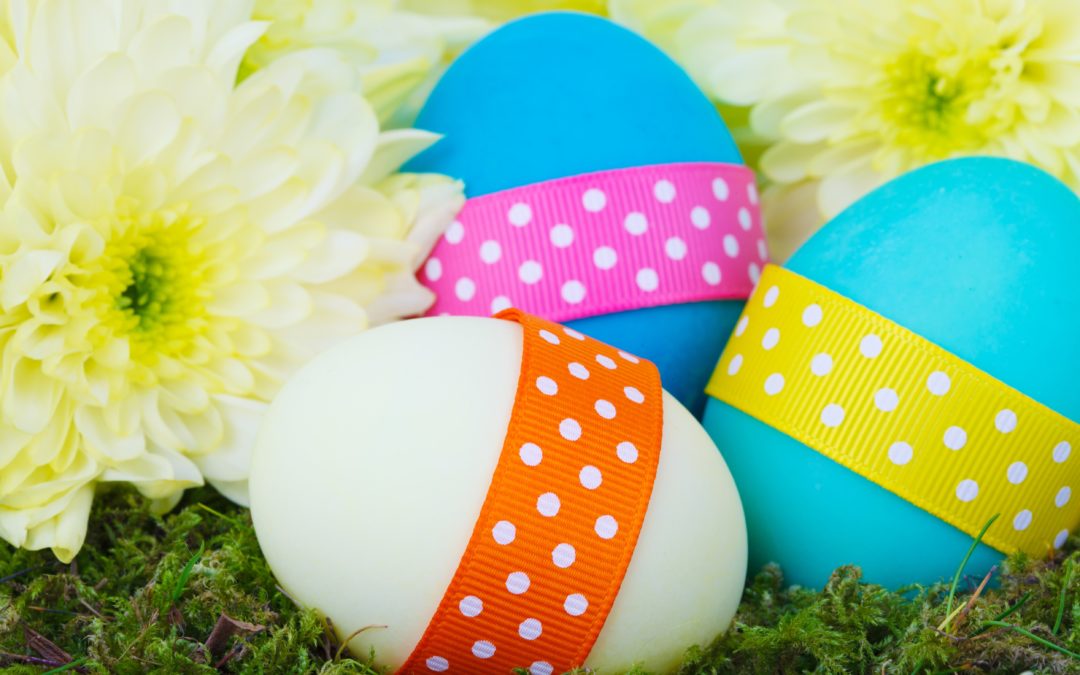
by Lorri | Apr 17, 2019 | UnCorked
There are certain times of the year when your questions have a recurring theme, and the weeks leading up to Easter is such a time. “What wine should I serve with our Easter gathering?”
It’s a great question not only because you are asking but because I am also planning my family get-together. I’m usually in charge of recommending the wines but this year have the added honor of hosting our family brunch. This would have a simple answer with a menu as straightforward as fish or red meat. But most likely your menu — as does mine — entails an array of traditional family dishes such as deviled eggs, green bean bundles and the customary ham.
Hands down, my favorite choices are riesling, gewurztraminer or dry rose.
I know, I know… unless you have been in one of my wine and food pairing classes you may not believe me on these “very rarely go wrong” recommendations. But trust me. There is no other way of explaining these pairings of perfection than by experiencing them. The key is finding wines that can serve one simple task, not competing with the food. With such an array of food flavors your wine choice should be a stand-by participant. These wines will always deliver.
If you have a family member who refuses to veer from his or her beloved red wines you can always depend on a light-bodied pinot noir.
THE VALUES
- 2018 Bell Rose, California (about $15 retail)
- 2017 Chateau Ste Michelle Dry Riesling, Washington (about $10 retail)
- 2018 Domaine Bousquet Rose, Argentina (about $11 retail)
- 2017 Hogue Cellars Riesling, Washington (about $11 retail)
- 2017 J. Lohr Monterey Riesling, California (about $11 retail)
- 2016 Louis Guntrum Dry Riesling, Germany (about $14 retail)
THE SPLURGES
- 2014 Anne Amie Dry Riesling, Washington (about $19 retail)
- 2017 Presqu’ile Winery Rose, California (about $22 Retail)
- 2018 Monchhof Slate Riesling, Germany (about $25 retail)
- 2018 Rudi Weist Monchhof Estate Riesling, Germany (about $19 retail)
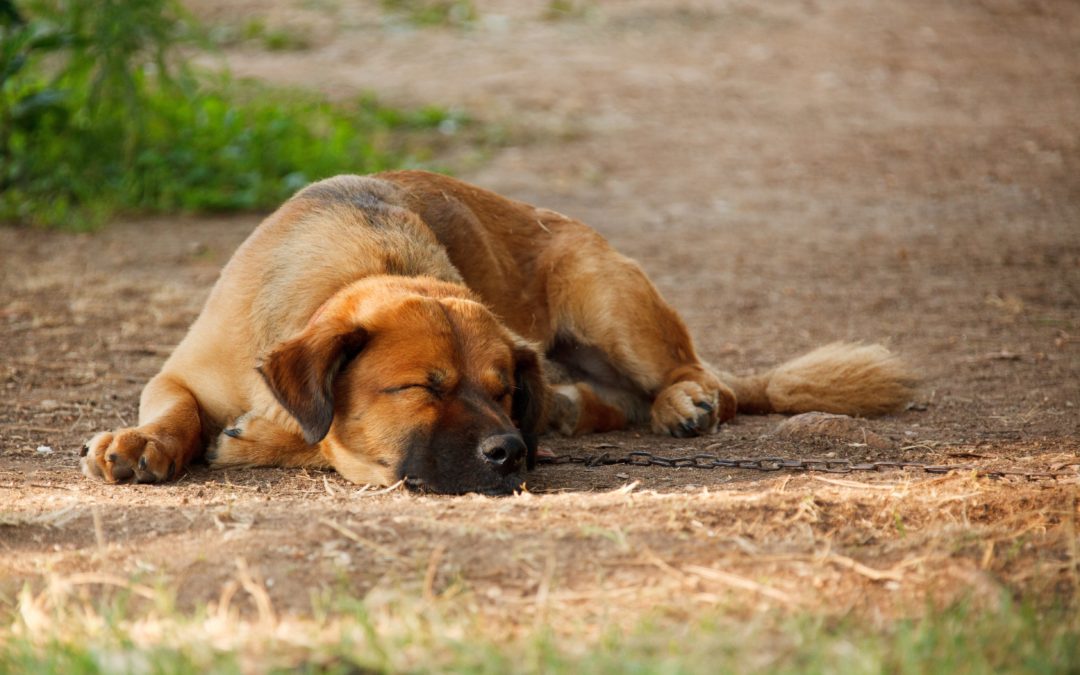
by Lorri | Apr 10, 2019 | UnCorked
I’m an avid dog lover so those vineyard visits where the shaggy, lovable canine comes to meet you in the vineyard are some of my favorites. Dogs have long been part of some vineyards’ operations — some so much they’ve been immortalized in glossy photograph-filled coffee table books boasting the warm smile of the vineyard’s loyal canine.
There are many benefits of the vineyard dogs you may have not considered. In addition to their companionship, their keen sense of smell and protection instincts make them invaluable vineyard workers. For centuries, growers have boasted of their trusted companions’ ability to determine a grape’s readiness for harvest based on sniffing out the sugar levels. And dogs are trusted with keeping the leaf-eating and trampling invaders, namely deer, at bay from the vineyard. These hardworking wine dogs patrol the fields deterring other pests such as gophers and squirrels and chasing away hungry birds.
But there is a new mission for the vineyard dog. Recently, Bergin University of Canine Studies in California began working with and training dogs to sniff out a wide-spread nuisance constantly plaguing grapes, the mealybug. This pesky little creature feeds on the base of the vine shoot, preventing the plant from producing fruit. If you are a sustainable or organic wine producer these tiny bugs can be a colossal problem. Pesticides are needed to kill the bugs, forcing many grape growers away from all-natural methods. Dogs are being trained to identify the scent of the female vine mealybug and then pinpoint its location, even to the specific vine. It’s the same method trainers have used for search and rescue missions. Why is this so important? This canine super-smeller can find a single vine infected with the pest, eliminating the need for broad use of pesticides.
Michael Honig of Honig Vineyards has been working with these select trained dogs since 2007. The winery dog (aka Honey) was one of the first in the pilot program training golden retrievers to detect the pest. This has been crucial for keeping their respected and diligent sustainable measures.
So, the next time you see that wine label, glossy calendar or celebrity wine dog book just remember these stars are more than just a fluffy, playful addition to the already exceptional vineyard visits.
THE VALUE
- 2018 Honig Napa Valley Sauvignon Blanc, California (about $19 retail)
THE SPLURGE
- 2017 Honig Napa Valley Cabernet Sauvignon, California (about $49 retail)
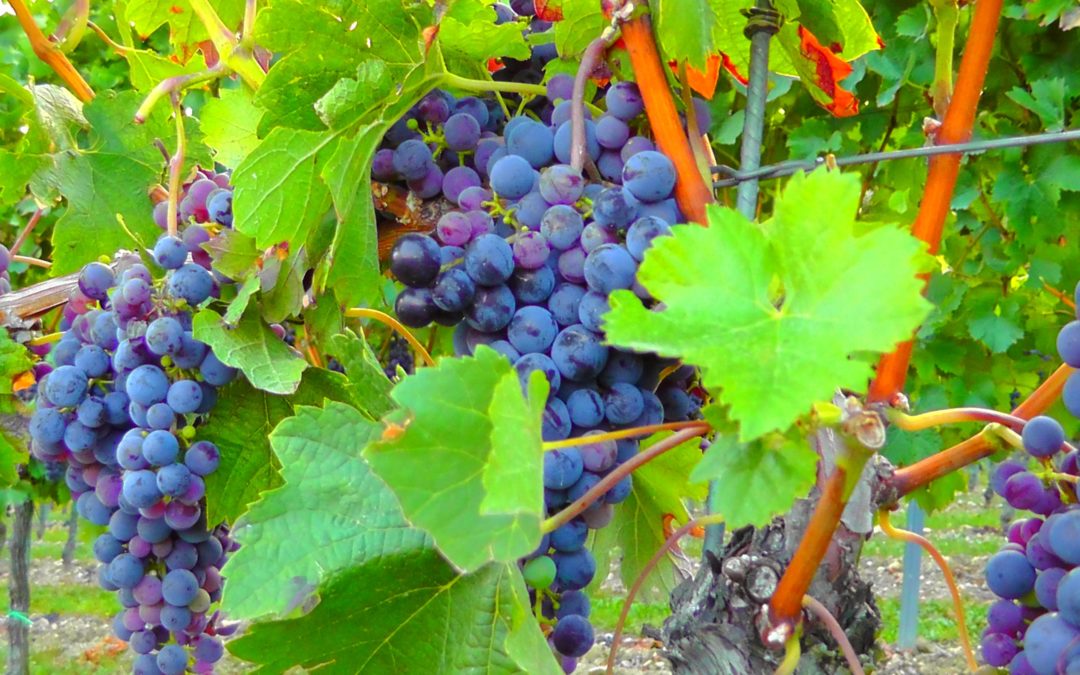
by Lorri | Apr 3, 2019 | UnCorked
Blending different grapes to produce wines is not a new concept considering it was how most ancient wines were vinified. The grapes were picked, thrown into a vessel and voila — wines were made. This was known as a field blend. But for modern blends the question I am most asked is: Are these wines of lesser quality?
The short answer: No.
It’s important to address because many consumers seem to have a tendency to shy away from blends for fear they aren’t as good as single varietal wines.
Today, the process for most blends is for the grapes to be picked and then fermented separately before blending. Most grapes are blended with what are known as traditional blending partners, for example you rarely will see a cabernet sauvignon blended with pinot noir, but cabernet and merlot are common blending partners. There’s more behind these partnerships than most people realize. It’s important to understand the concept and the simple agriculture rules for why winemakers chose to blend rather than use a single variety for production.
It isn’t simply because some grapes taste wonderful together. It’s also a matter of viticulture strategy. Most grapes with similar growing climate demands will generally be good blending partners. Consider if you have a crop of any grapes growing within miles of each other. Chances are very strong you will need to have some type of “insurance” against one grape variety ripening early only to be destroyed by frost or another dilemma of climate factors forcing one variety to ripen too soon while another just can’t seem to get the sunshine to gain the sugars and is racing in acidity.
Blending allows vintners to bring out the best qualities of each grape, while providing some crop (and profit) protections in the field.
Examining some of the most famous red blends of Bordeaux is a good start in “blending 101.” The top grapes grown are cabernet sauvignon, merlot, cabernet franc, malbec and petit verdot. Cabernet is considered the body and tannic structure while merlot, very similar to a cabernet, offers more refined tannins and juicier cherry and herbal notes. While cabernet franc and malbec can obviously stand alone, they bring complexity of peppery flavors, plum and a lot of creamy fruit flavors. Which leaves the distinct petit verdot usually used sparingly because of its intense opaque color and a splash of floral and tannins.
So, when picking up your next bottle of a blended wine consider the strategic growing practices and of course the care in the art and science of the winemaker’s direction.
THE VALUE
- Chateau Bonnet Rouge, France (about $20 retail)
THE SPLURGE
- Chateau Greysac Medoc, France (about $30 retail)
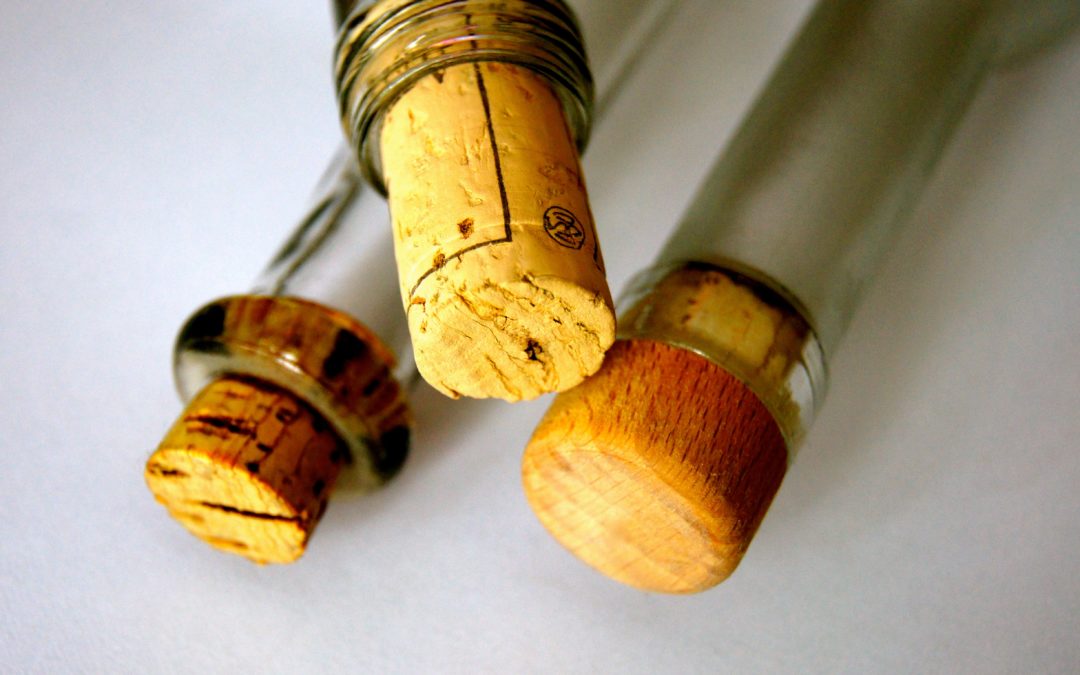
by Lorri | Mar 27, 2019 | UnCorked
I am always one for a celebration. This month marks my 14th anniversary of writing Uncorked. Writing this column gives me an opportunity to share my love and passion for wine but also offer ideas, discuss trends and sometimes just voice my opinions. But it’s your questions and feedback each week I look forward to the most. Your comments and questions have been the source of hundreds of columns.
One topic that comes up often is the changing way we drink our wines and more specifically which wines we’re drinking.
ROSÉ IS THE NEW CHARDONNAY
It has taken years, but finally rosé is considered an extraordinary dry wine standing on its own. The perception has always been all rosé wines were created equal, generally landing in the white zinfandel and extreme sweet category. It has been a remarkable transition seeing readers reaching for those refreshing rosés. Even just a few years ago the retail shelves only stocked a few choices; today you have almost entire sections devoted to this subtle, elegant wine.
THE VALUE
- 2018 Bell Rosé, California (about $15 retail)
THE SPLURGE
- 2018 Presqu’ile Vineyard Rosé of Pinot Noir, California (about $20 retail)
THE TIME OF THE BOX IS NOW
Over the past year I have watched a remarkable transition of expectations of boxed wine. Just five years ago the mere mention of serving or drinking a wine from a box was an unthinkable concept for many wine drinkers. But as more and more brands have entered the market, including well-made, high-end brands, consumers are embracing boxed wines with their ideal closure and storage options.
THE VALUE
- 2018 Earth Wise Red Blend 3L, Spain (about $19 retail)
THE SPLURGE
- 2018 Bota Box Pinot Grigio 3L, California (about $20 retail)
THERE ARE NO RULES
If you thought merlot was a good match with steak, try a riesling. I hope by now I have debunked the old rules of food and wine pairing. Just as your taste buds differ so does your ideal food and wine pairing combination. The rules were put in place centuries ago as a general guideline, but today more and more consumers are exploring and understanding, it’s all about your personal preference and style you enjoy.
THE VALUE
- 2018 Chateau Ste. Michelle Dry Riesling, Washington (about $11 retail)
THE SPLURGE
- 2018 Anne Amie Yamhill Riesling, Oregon (about $20 retail)
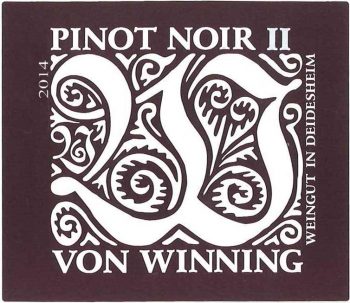
by Lorri | Mar 20, 2019 | UnCorked
I wish you could have been sitting beside me at a recent tasting. Not just because you would’ve enjoyed the outstanding wines of the Von Winning vineyards but to understand how we are missing out by not buying more German wine.
We were honored to have Andreas Hutwohl of Von Winning guide us through an unforgettable tasting of some of the most impressive German rieslings and equally amazing pinot noirs.
Of course, we identify Germany with unforgettable rieslings but it was the pinot noirs that had my attention. You may be surprised to learn Germany is the third-largest producer of pinot noir in the world, behind France and the United States.
Germans call the grape spätburgunder, which means late ripening (spät) pinot (Burgunder). (The literal translation is late burgundy.) Pinot noir once accounted for just a speckling of plantings in Germany’s 13 wine regions but now makes up more than 50 percent of plantings in regions such as Ahr, Baden and Franken.
I first tasted spätburgunder almost 20 years ago. At that time there were very few examples showcasing the potential of this grape in Germany. It was also when many German vintners were struggling to get their grapes to the desired levels of ripeness before harvest. Today, thanks to innovations in viticulture and new winemaking techniques, ripening isn’t a problem and German winemakers are taking these wines to the next level.
When tasting spätburgunder, lovers of pinot noir will find a distinctive, unique expression of this grape. The wines tend to have a fresher, leaner and more aromatic profile than pinot noirs from other regions in the world. As winemaking techniques improve and younger winemakers take the helm we will see more and more high quality pinot noir coming out of Germany.
German riesling is widely available in the United States but German pinot noir is quite limited. Typically, a few dozen to a few hundred cases are imported. You don’t want to miss out on this opportunity to taste for yourself Von Winning’s lineup.
THE VALUES
- 2017 Von Winning Estate Riesling Trocken, Germany (about $21 retail)
- 2017 Von Winning ‘Winnings’ Riesling, Germany (about $19 retail)
- 2017 Von Winning Sauvignon Blanc II, Germany (about $22 retail)
- 2018 Von Winning Pinot Noir Rosé, Germany (about $22 retail)
THE SPLURGES
- 2016 Von Winning Kalkofen Riesling Grosses Gewachs, Germany (about $70 retail)
- 2015 Von Winning Pinot Noir II, Germany (about $43 retail)
- 2014 Von Winning Pinot Noir I, Germany (about $82 retail)

by Lorri | Mar 13, 2019 | UnCorked
Grapevines may not have opinions about climate change, but they are experiencing the changes.
For wine drinkers it’s a common question I am asked by readers. Is the climate affecting our beloved vineyards around the world? The short answer is … of course.
For the long answer it’s important to understand the difference between climate and weather.
Climate refers to general conditions in a given place over a long period of time, whereas weather refers to temporary conditions of any given day. A place’s climate is defined by its weather patterns established over a period of decades.
Climate and weather can have profound effects on wine. A region’s climate dictates which grapes can be grown, while its weather influences the quality of those grapes in any given year. This is the precise reason some vintages are highly valued and sought-after and others are not.
In 2018, we saw many wine regions including the Northern Rhone, Austria and Alsace having their earliest harvest in decades. Many regions experienced unusually warm weather and much less rainfall, which resulted in very early ripening with ample sugars. Many producers are hailing 2018 as an outstanding vintage. In contrast, when growing conditions are unusually cool, the grapes will struggle to ripen and may not have sufficient sugar levels, resulting in undesirably high acidity.
To know how climate change is affecting wine production we must look at the big, long range picture.
Most only think of increasing temperatures affecting vineyards and our wines. But, it’s the increasing carbon dioxide (CO2) levels showing the largest impact on vineyards and the actual grapevines. To test future conditions, researchers at Hochschule Geisenheim University in Germany have spent years focusing on crop production using a simulated ecosystem.
They built ventilators into rows of riesling and cabernet sauvignon grapes. Half of the ventilators were blowing normal air while the others were blowing air with increased CO2. They raised the concentration of the CO2 about 20 percent to reach levels expected worldwide by 2050. The results were substantial. The CO2 vines seemed to develop extra sugar in the grapes making them bigger and juicer.
The research also showed the grapevines were soaking up much more water than a normal crop, depleting deep underground reserves. Because of this, the surrounding ecosystems were affected by moths. The moths living in the vineyard were reproducing faster, resulting in more grape eating larvae for growers to combat. With all that being said, the grapes seem to taste normal.
So what does this mean for the future of wine? No one knows for sure.
THE VALUE
- 2018 Hugel Alsace Gentil, France (about $15 retail)
THE SPLURGE
- 2018 Bruno Hunold Selection Gewurztraminer, France (about $37 retail)





